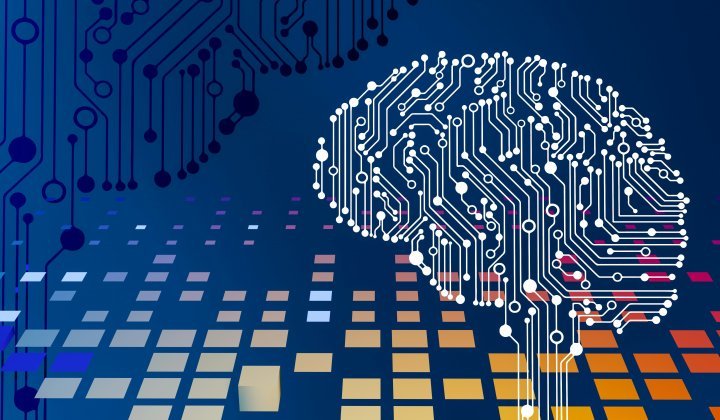When Dy Moonsammy embarked on the Transport Education Training Authority (TETA) International Executive Development Programme (IEDP) at GIBS in 2018, she was Senior Manager for Learning and Development at Comair Limited. Today, she is Executive Manager for Corporate Affairs: Academy – a new position at a new organisation that has been born out of the programme. The aviation academy started as Moonsammy’s Individual Action Learning Project (IALP) and will be launching in 2019.
Moonsammy was nominated for the TETA programme – one of just 15 people on the programme out of 369 applicants – and says that the IEDP was an eye-opener. “It was best-in-class – relevant, rigorous, intense and sometimes overwhelming,” she says. “The biggest value for me was the global immersion, which was unbelievable, but the whole programme just facilitates exponential learning.”
Erik Venter, Comair CEO, was approached by Moonsammy, to mentor her through the programme. As soon as she knew she would be doing an IALP, focusing on a business improvement for her company, but also to benefit the broader industry, she asked him what kept him up at night – what problem could she research? “He said the idea of an aviation academy for South Africa, not just for Comair, had been on his radar for many years,” she says.
...she asked him what kept him up at night – what problem could she research?
Venter, Moonsammy and many players in the sector realise that to be sustainable in the long term, the aviation industry needs to attract more people into the field, and to grow the skills pool. “The global vision was already there from Erik Venter for an academy like this – for an academy that’s broader than Comair and serves South Africa, the region and globally, as a whole. But it was something that needed research. It was right up my alley, and so that’s where this all started,” Moonsammy says.
Research, research
She began to investigate the feasibility of establishing an independent Comair Training Academy. To do this, she researched how to structure and set up such an academy, the logistics involved, the financial model and how to measure the project’s success. She identified core stakeholders, including the South African Civil Aviation Authority (SACAA), the Association of African Aviation Training Organisations (AATO), the International Air Transport Association (IATA), the Department of Transport, the various airlines operating in South Africa, consumers and customers of aviation training, TETA, other industries requiring interpersonal skills training or leadership training, and Comair staff.
She reached out to her network, which, given her position as President of AATO is extensive, and began to speak to people at organisations like Singapore Aviation Academy, Ethiopian Aviation Academy and South West Airlines’ South West University. She notes that the difference between these entities and the independent aviation academy she’s now in the process of setting up is that the vision for the latter is bigger. “This is not a Comair academy – that already exists – but a facility for South Africa, the African continent and beyond. Partnerships have been established with major aviation players to help make this a reality. We realise the value in collaboration. These things cannot be achieved on our own.”
While she was undertaking the research, the project team was simultaneously being established. “We’re quite far down the line. We’ve got a timeline in place and a website being developed. We’re hoping to launch that in April and then to kick off the academy in July. We have a dedicated team working on this and we’re talking to the Department of Transport, as well as people at ACSA and other partners who share our vision.”
Comair is commercialising its own learning and development department, which will also feed into the academy, and Moonsammy and the project team are engaging with business schools to help bring different streams online. These will include various training focuses, from commercial to pilot, ground staff, cabin crew and operational training, as well as leadership and coaching – all with a distinct aviation spin.
Fitting into the bigger picture
Moonsammy reveals that the academy is part of a wider project, in partnership with the Department of Education, including Gauteng Education MEC Panyaza Lesufi, and other industry players, which has identified seven types of “Schools of Specialisation”. President Cyril Ramaphosa alluded to this in his 2019 SONA address. One of these schools is Rhodesfield Technical High School, which will specialise in aviation, given its close proximity to OR Tambo International Airport.
The idea is to create a continuous pipeline of aviation talent...
“We have a second project team set up for this project to help create a world-class educational institution that can become a prototype for all future such institutions,” Moonsammy says. With a Letter of Intent, a roadmap and a steering committee established, this project has progressed far down the line in terms of development.
The idea is to create a continuous pipeline of aviation talent, which means qualifications need to be developed so that learners emerge with a vocational qualification as well as matric. Comair can already begin to share qualifications that have been accredited by SACAA. Learners who matriculate from this school and have an interest in pursuing a career in aviation can then feed into the academy.
The success of this academy, Moonsammy believes, will rest on the fact that it is a collaborative effort for the broader good by a number of stakeholders who can bring various resources to the table. If the academy had to be started from scratch, it would cost an estimated R70 million. However, by coming together and each contributing existing resources and capacity towards the project, the parties involved can get the academy up and running without major capital outlays.
“The vision is big but honourable,” says Moonsammy. “It stems from doing the right thing. At the same time, to realise the vision, this needs to be run as a business to be sustainable and to materialise as envisioned. It has to be profit-based. It has to be a private-public partnership. It will benefit every partner and South Africa as a whole. By 2036, globally, there are in excess of 600 000 aviation professionals required. This academy can help South Africa to prepare for that need.”
Real-world benefits from TETA IEDP programme
Amy Moore, Action Learning Coach and Integrator for the TETA IEDP, worked with delegates for the duration of the programme to help them turn their projects into a reality. “I think this project has the chance to change how training and development is conducted in the aviation industry,” she says.
Moore notes that the TETA IEDP programme has four aims:
· To enhance delegates’ ability and capacity to manage complexity and change;
· To explore global best practice trending with respect to leadership, innovation and strategic management;
· To cultivate personal and professional development, thereby increasing the transportation talent pipeline; and
· To enable delegates to apply their learning (through the action learning projects in particular) to support TETA’s goal of fostering economic development and job creation.
Moonsammy’s project certainly ticks the fourth aim, demonstrating how programme learning can translate into real-world action, with the potential to positively improve the transport sector by developing skills, and, in the long-term the sustainability of the aviation industry in South Africa.




